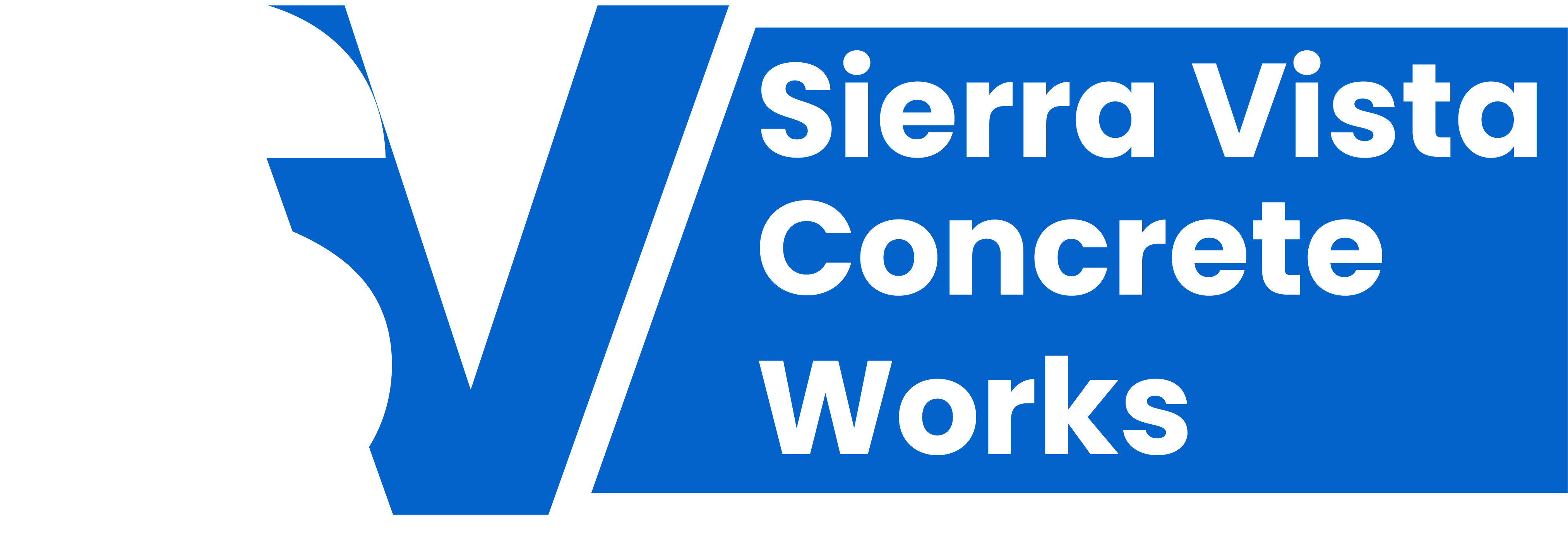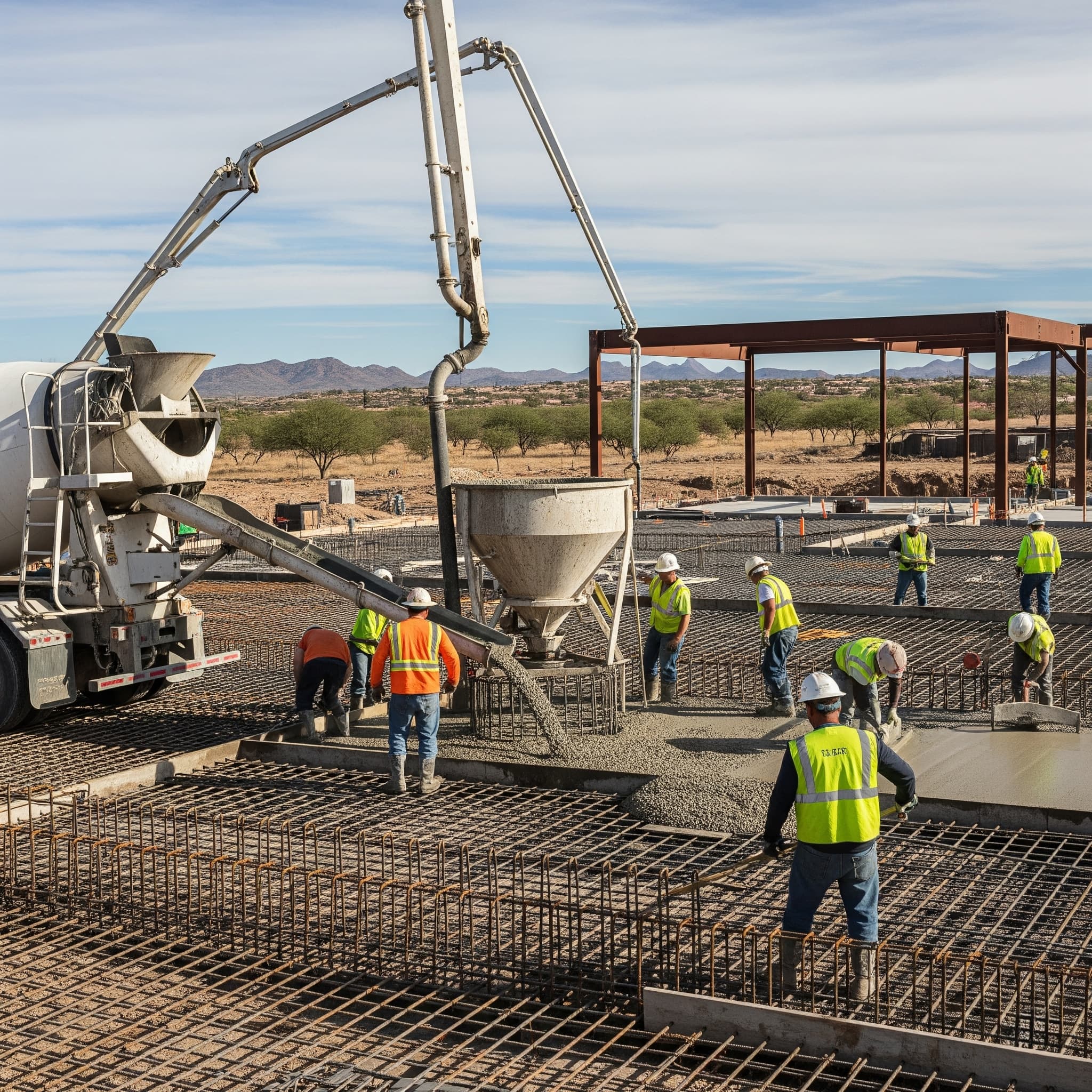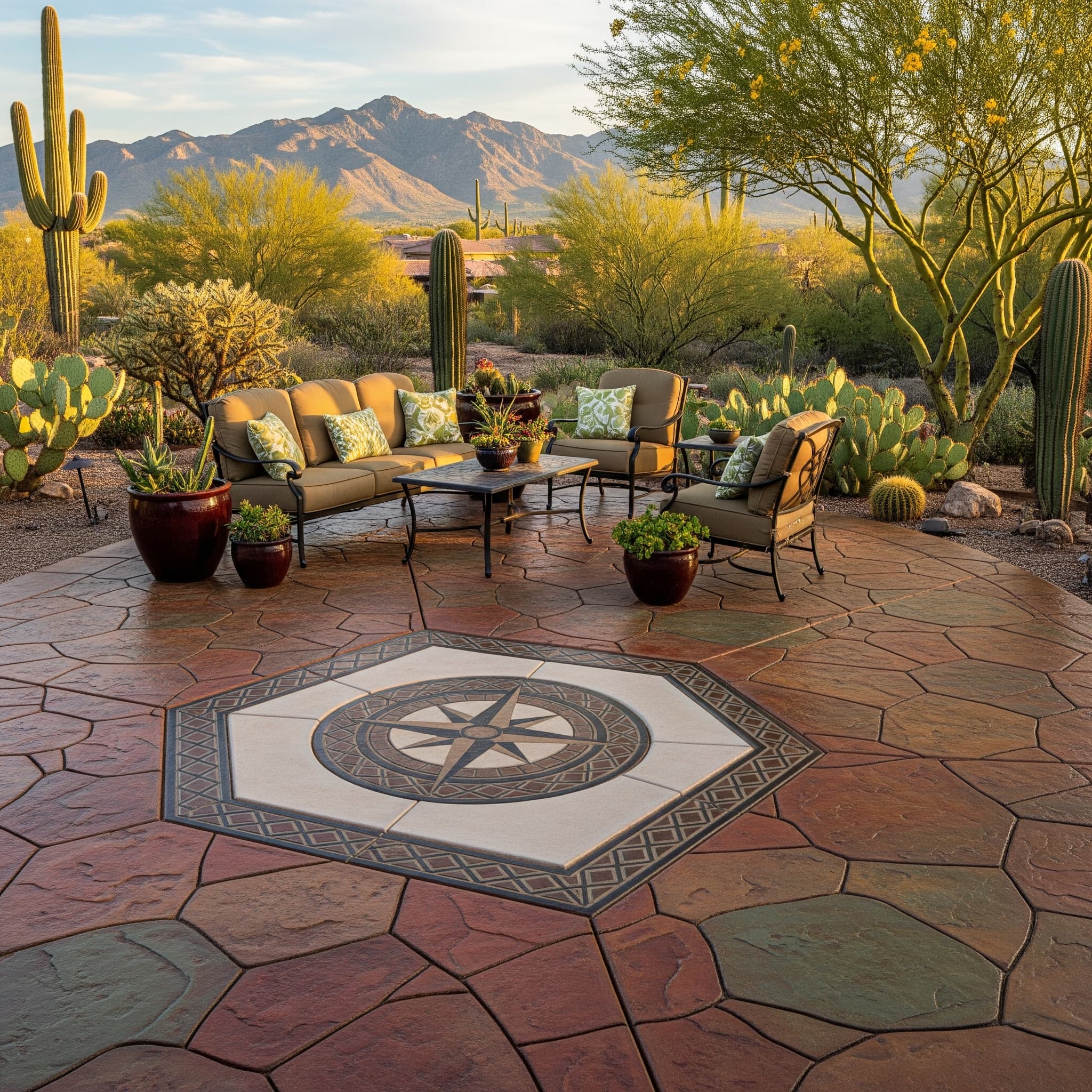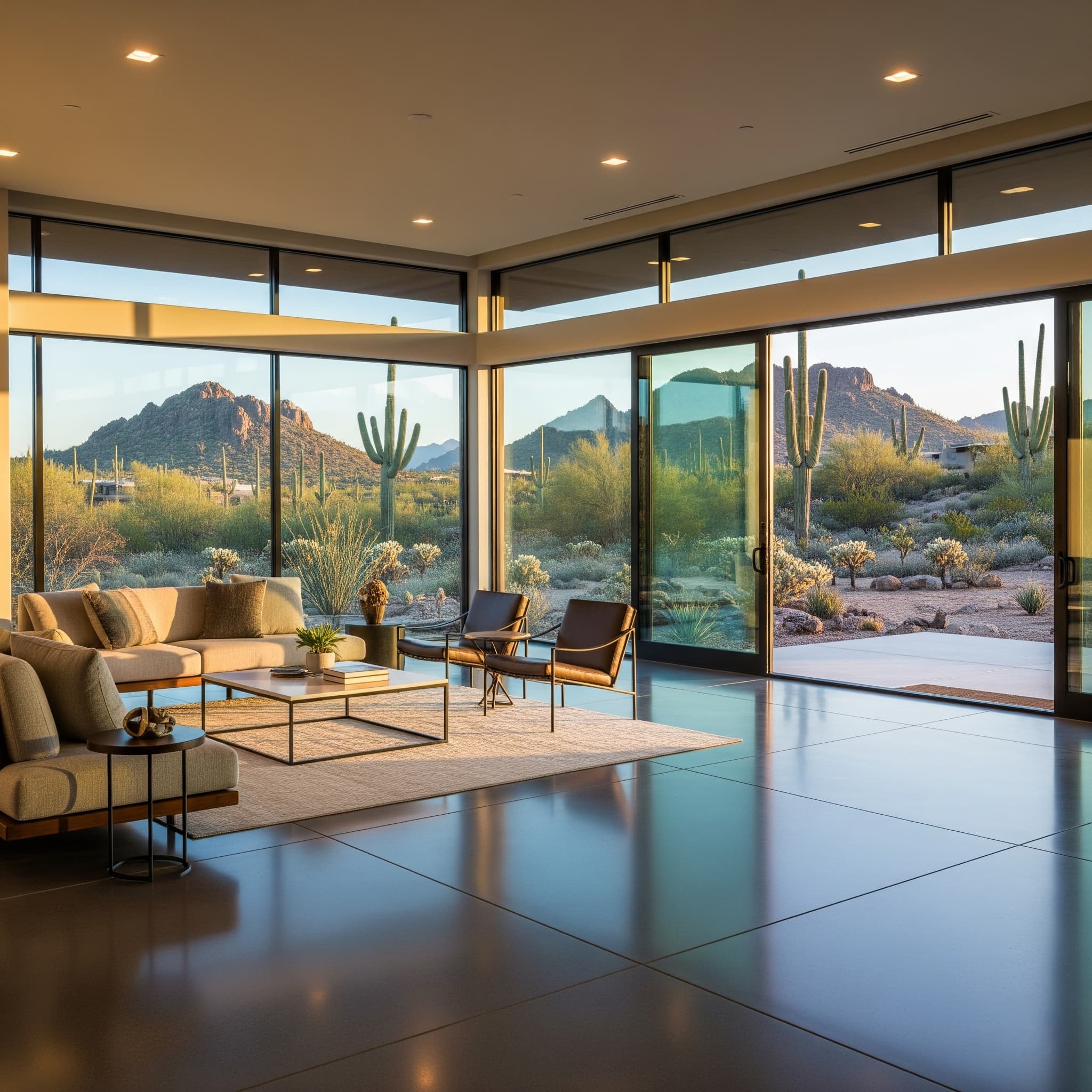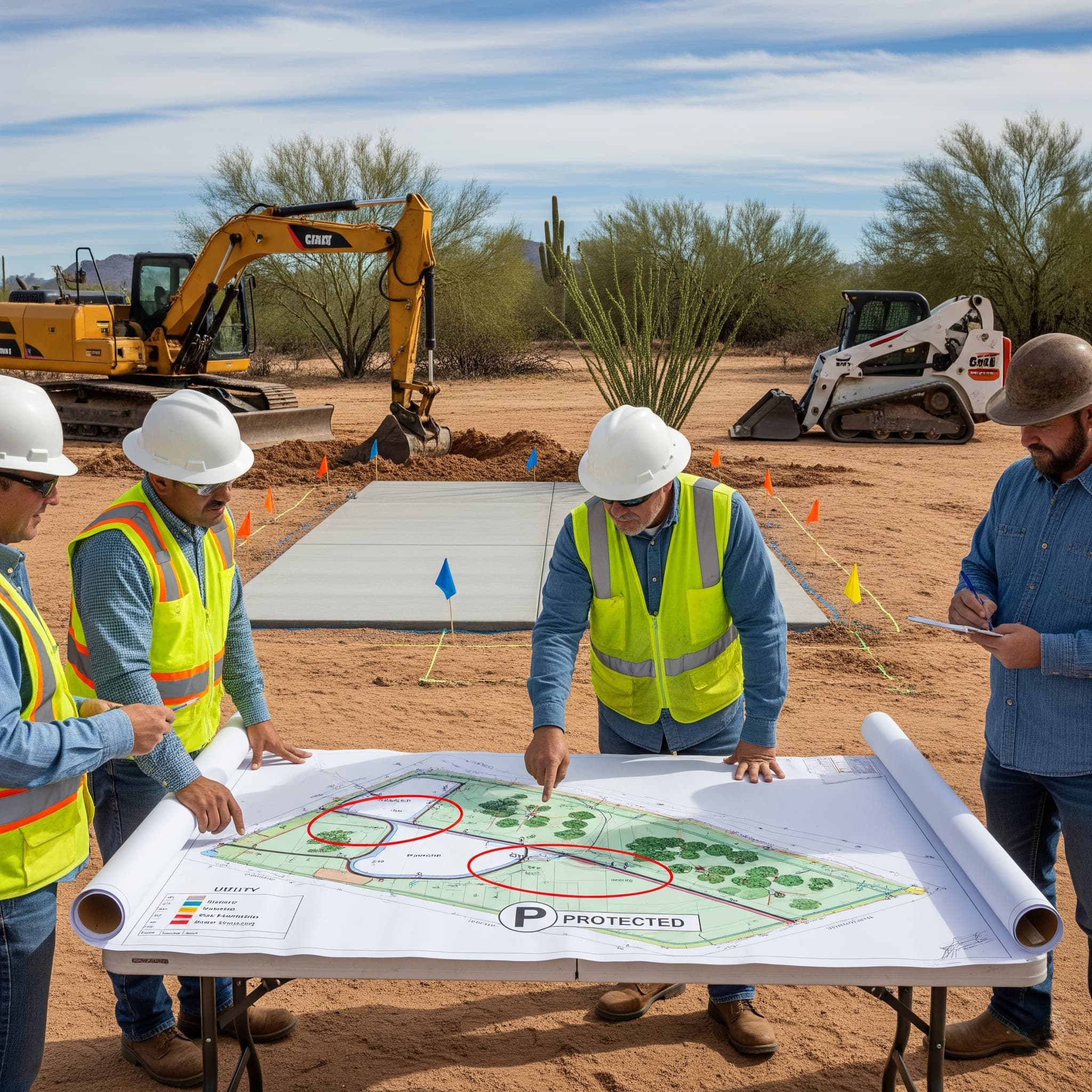
Mixing Decorative Concrete Styles in Sierra Vista Homes
Decorative Concrete Sierra Vista
Decorative concrete has evolved far beyond simple stamped patterns or single-color applications, offering Sierra Vista homeowners sophisticated design possibilities through creative combinations of techniques. Today’s most stunning outdoor spaces showcase the artistic potential of mixing stamped patterns with custom staining and decorative inlays to create truly unique surfaces. This comprehensive approach transforms ordinary concrete into works of art that rival the most expensive natural materials while providing superior durability for Arizona’s challenging climate. Professional contractors now combine multiple decorative concrete techniques to achieve complex visual effects that capture attention and enhance property values. Understanding how these complementary techniques work together opens unlimited possibilities for creating personalized outdoor living spaces that reflect individual style preferences and architectural themes.
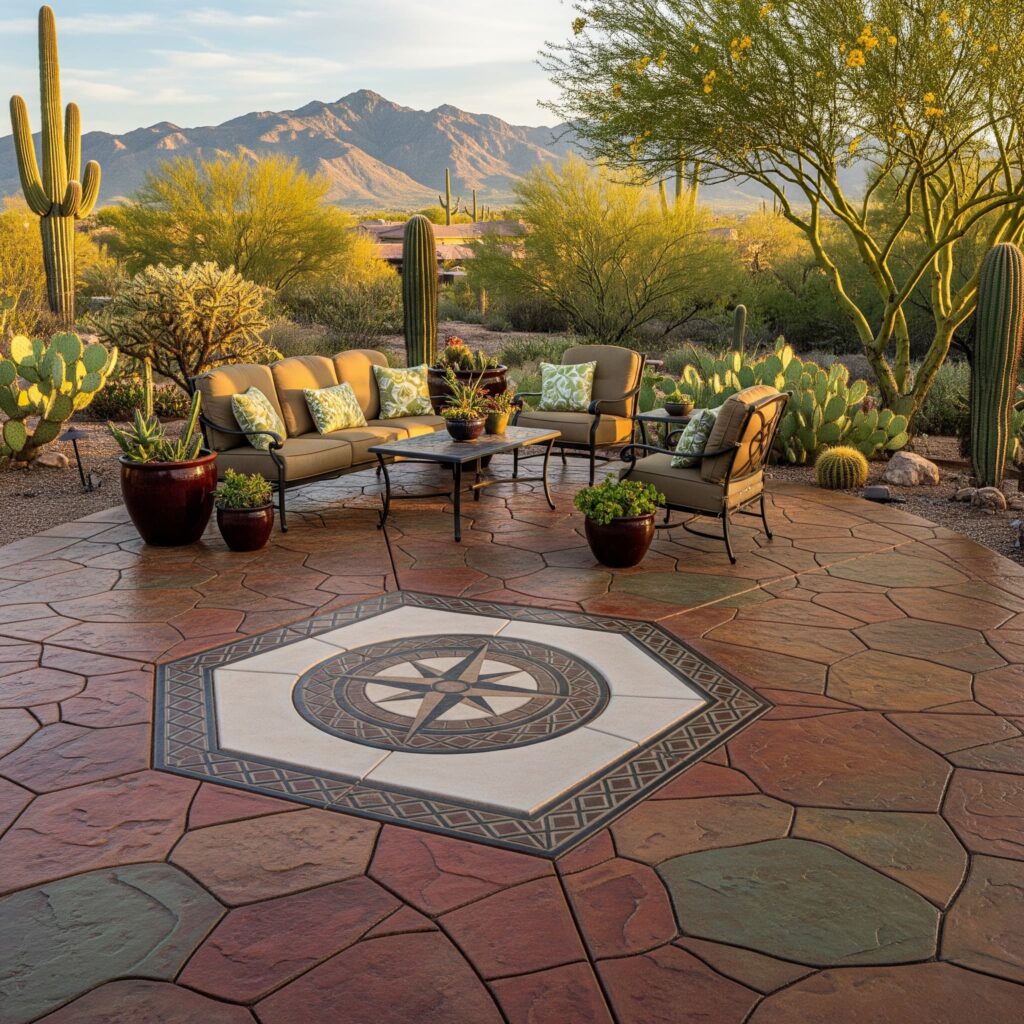
The Art of Combining Decorative Concrete Techniques
Modern decorative concrete artistry involves strategically layering different techniques to create depth, contrast, and visual interest that cannot be achieved through single-method applications. The most successful projects begin with stamped patterns as the foundation, then incorporate staining to enhance realism and add character, followed by carefully placed inlays that serve as focal points or accent elements.
This multi-layered approach allows Sierra Vista homeowners to achieve highly customized results that reflect the natural beauty of the surrounding desert landscape. For properties near the Huachuca Mountains or along Garden Canyon, decorative concrete combinations can incorporate earth tones and textures that seamlessly blend with the environment while providing modern functionality and easy maintenance.
Design Philosophy and Planning
Successful decorative concrete combinations require careful planning to ensure each technique enhances rather than competes with the others. The stamped pattern provides the primary texture and structure, while staining adds depth and natural color variation. Inlays introduce contrasting materials and focal points that draw the eye and create memorable visual impact.
Stamped Patterns as the Foundation
The stamped component typically serves as the primary design element, establishing the overall pattern theme and surface texture. Popular foundation patterns for mixed-technique applications include Arizona flagstone, random fieldstone, and large-format tile designs that provide ample surface area for additional treatments. These patterns create realistic three-dimensional textures that catch light and shadow while offering sufficient flat areas for staining effects.
Advanced stamping techniques using seamless pattern systems eliminate visible joints and create continuous surfaces ideal for subsequent decorative treatments. The magnetic alignment systems available in modern stamps ensure perfect pattern registration across large areas, providing the consistent foundation necessary for successful multi-technique applications.
Pattern Selection for Multiple Techniques
Certain stamp patterns work better than others when planning to incorporate staining and inlays. Random stone patterns like Arizona flagstone offer irregular shapes that naturally accommodate color variations, while geometric patterns provide structured layouts ideal for systematic inlay placement. The key lies in selecting patterns with appropriate scale and complexity to support additional decorative elements without overwhelming the overall design.
Custom Staining for Depth and Realism
Concrete staining transforms monochromatic stamped surfaces into rich, multi-tonal masterpieces that replicate the natural color variations found in authentic stone and organic materials. Water-based stains offer precise color control and can be layered to create subtle gradations, while acid stains produce unique chemical reactions that create organic, unpredictable color patterns reminiscent of natural weathering.
Professional staining techniques include hand-application methods using brushes, sponges, and rollers to create realistic stone-like color variations. Multi-color staining systems combine complementary earth tones to achieve natural-looking depth that enhances the dimensional qualities of stamped textures. Sierra Vista’s desert environment provides perfect inspiration for warm color palettes featuring sandy beiges, rust browns, and sunset oranges.
Layered Staining Techniques
Advanced staining involves multiple applications of different colors to build complex color relationships. Base colors establish the primary tone, while accent colors applied selectively create highlights and lowlights that emphasize texture details. Antiquing washes add a weathered appearance that makes new concrete surfaces appear naturally aged, while color hardeners provide additional surface strength and integral coloration.
Decorative Inlays for Focal Interest
Inlays represent the premium decorative concrete technique, incorporating contrasting materials like natural stone, ceramic tiles, metal accents, or glass elements into the concrete surface. These features serve as focal points that break up large expanses of pattern while introducing different textures, colors, and light-reflecting qualities that add sophistication and visual complexity.
Popular inlay materials for Arizona applications include native stones that complement the regional geology, tumbled travertine pieces that echo desert limestone formations, and recycled glass aggregates that sparkle in the intense southwestern sunlight. Metal inlays featuring copper or bronze elements develop natural patinas over time that enhance their integration with surrounding concrete surfaces.
Strategic Inlay Placement
Successful inlay design requires careful consideration of placement, scale, and material compatibility. Compass roses, geometric medallions, and border treatments represent traditional applications, while contemporary designs might incorporate flowing organic shapes or abstract patterns. The key lies in achieving a balance between the inlay elements and the surrounding decorative concrete without creating visual chaos or compromising structural integrity.
Technical Integration Challenges
Combining multiple decorative concrete techniques presents unique technical challenges that require specialized expertise and careful coordination. Timing becomes critical when applying stains over stamped surfaces, as the concrete must achieve proper cure levels while remaining receptive to stain penetration. Inlay installation requires precise mold preparation and may involve multiple pours to achieve proper embedding and surface integration.
Surface preparation requirements vary between techniques, with each method demanding specific moisture content, surface texture, and timing considerations. Professional contractors must coordinate these requirements to ensure optimal adhesion, color development, and long-term durability across all applied techniques.
Quality Control Considerations
Multi-technique decorative concrete projects require enhanced quality control measures to ensure consistent results across different application phases. Color matching between different areas, pattern alignment around inlay features, and seamless transitions between techniques demand experienced craftsmanship and careful attention to detail throughout the installation process.
Climate Considerations for Sierra Vista
Arizona’s extreme climate conditions significantly impact decorative concrete installations, particularly when combining multiple techniques that may respond differently to environmental stresses. UV exposure affects stained surfaces differently than stamped textures, while thermal expansion may create differential movement between inlay materials and surrounding concrete.
Proper sealing systems become crucial for protecting complex decorative treatments from moisture intrusion during the monsoon season and UV degradation during intense summer heat. Advanced sealer formulations designed for decorative concrete applications protect while enhancing color depth and maintaining surface integrity across all applied techniques.
Long-term Performance Factors
The durability of mixed decorative concrete techniques depends on proper material selection, installation quality, and ongoing maintenance practices. Different components may require different maintenance schedules, with stained areas needing periodic color refreshing and inlays potentially requiring specialized cleaning or resealing procedures.
Design Inspiration and Style Trends
Current decorative concrete trends emphasize natural materials and organic patterns that complement Southwest architectural styles. Popular combinations include Arizona flagstone stamping with rust and tan staining accented by turquoise glass inlays, or random fieldstone patterns with earth-tone staining and copper accent strips that develop attractive patinas over time.
Contemporary applications might combine large-format geometric stamping with monochromatic staining and metallic inlay strips for modern, sophisticated appearances. The key lies in selecting combinations that enhance rather than compete with existing architecture and landscape design elements.
Regional Aesthetic Integration
Sierra Vista’s unique position between desert and mountain environments inspires decorative concrete combinations that reflect both geological influences. Designs might incorporate boulder-like stamping with desert sunset color staining and river rock inlays, or sandstone textures with sage green staining and fossil-embedded accent areas.
Investment Value and Property Enhancement
Multi-technique decorative concrete installations typically command premium pricing but provide exceptional value through their unique aesthetic impact and superior durability. These sophisticated surfaces often become signature features that significantly enhance property values and create lasting impressions on visitors and potential buyers.
The permanence and low maintenance requirements of properly installed decorative concrete combinations make them excellent long-term investments compared to other premium surfacing options that may require frequent replacement or intensive maintenance in Arizona’s challenging environment.
Professional Installation Benefits
The complexity of multi-technique decorative concrete installations makes professional installation essential for achieving optimal results. Experienced contractors understand the timing, material compatibility, and technical requirements necessary for successful integration of multiple decorative techniques while ensuring long-term performance and aesthetic appeal.
At Sierra Vista Concrete Works, we specialize in creating sophisticated decorative concrete combinations that showcase the full artistic potential of modern concrete technology. Our expertise in coordinating stamped patterns, custom staining, and decorative inlays ensures your project achieves the unique character and lasting beauty that makes your outdoor space truly exceptional.
